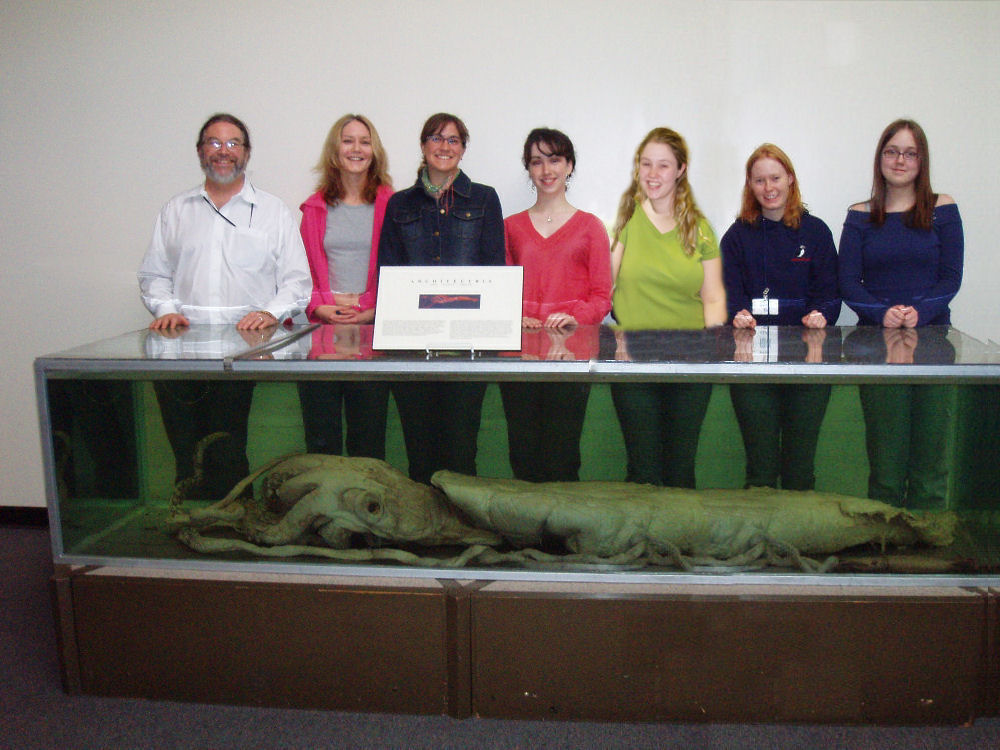 Carr Lab, Memorial University of Newfoundland
Carr Lab, Memorial University of Newfoundland Carr Lab, Memorial University of Newfoundland
Carr Lab, Memorial University of NewfoundlandResearch Interests:
I am interested in patterns
and processes of molecular phylogeography and evolution within and
among species and natural populations of vertebrate animals, and have
adopted novel genomic approaches to these questions. My current
investigations include: (1) Mitochondrial population genomics of marine fishery species, including Atlantic Cod, Harp Seals, Hooded Seals, and Wolffish (Anarhichas spp.), (2) Molecular systematics & morphological evolution of deer, with emphasis on Neotropical species (Cervidae), (3) Biogeographic evolution of cods and pollacks (Gadidae), (4) Behavioural evolution of true seals of the North Atlantic (Phocidae), (5) Genomic diversity of the founding human population of Newfoundland, (6) Phylogeography of Newfoundland "Species-at-Risk" of extinction, including Wolffish, Caribou, Ivory Gulls, and the occasional "sea monster". For further details and other projects, please see [http://www.mun.ca/biology/scarr/Research.html] or contact Steve at scarr@mun.ca.
My laboratory has taken a genomic approach to the interrelated problems of population and systematic biology. The strategy uses a “long-range PCR” and leap-frog DNA sequencing strategy that permits amplification and sequencing of the entire mtDNA genome of related species as a series of ordered, contiguous fragments. Well-resolved, highly-corroborated molecular phylogenies can generate and test hypotheses about morphological, biogeographic, and behavioral evolution. Phylogeographic analysis [the analysis of genetic relationships in their geographic context] of completely-resolved intraspecific gene trees, based on full-length mtDNA genomes, provides the detailed historical information and necessary statistical power to evaluate vicariance and dispersal phenomena at scales of interest to fisheries managers and population biologists.
In cooperation with Newfound Genomics, a local biotechnology company, my lab is developing a new biotechnology, DNA microchip “re-sequencing,” which uses a reference DNA sequence to “re-sequence” homologous sequences in new individuals. The method generates complete mtDNA-genome-sized sequences in a single experiment. Experiments with a human mtDNA chip show that the approach is practical, accurate, and cost-effective. We have developed a multi-species DNA “ArkChip” microarray as a practical method for assessing the genetic structure of populations and species of interest to fisheries and species-at-risk [http://www.mun.ca/biology/scarr/Genomic_Biotechnologies_for_Biodiversity.html ].
My laboratory includes an Applied Biosystems automated DNA sequencer, which facilitate rapid collection of data on population-sized samples. This facility has provides a core DNA sequencing service on the MUN campus (“The Helix & Primer”),
to facilitate the development of collaborative and contract research
work on molecular genetics and genomics. Inquiries are invited at: http://www.mun.ca/biology/scarr/Helix_&_Primer.html .
SM Carr and HD Marshall. Phylogeographic genomics of Atlantic Cod: the “Codmother” and the “Out of Newfoundland” hypothesis. Proceedings of the National Academy of Science, submitted
SMC Flynn and SM Carr. Species-specificity
of SNP detection on DNA microarrays: efficiency and accuracy of
re-sequencing of chimpanzee and gorilla mtDNA genomes on a
human-specific MitoChip. BMC Genomics, in review.
SM Carr, HD Marshall, ATDuggan, SMC Flynn, KA Johnstone, AMPope, and CD Wilkerson. 2007. Phylogeographic
genomics of mitochondrial DNA: patterns of intraspecific evolution and
a multi-species, microarray-based DNA sequencing strategy for
biodiversity studies. Comparative Biochemistry and Physiology, D: Genomics and Proteomics, in press.
KA Johnstone, HD Marshall, and SM Carr. 2007. Biodiversity
genomics for Species At Risk: patterns of DNA sequence variation within
and among complete mitochondrial DNA genomes of three species of
Wolffish (Anarhichas spp.). Canadian Journal of Zoology, 85:151-158.
HD Marshall, KA Johnstone, and SM Carr. 2006. Species-specific oligonucleotides and multiplex PCR for forensic discrimination of two species of scallops, Placopecten magellanicus and Chlamys islandica. Forensic Science International, 167:1-7.
MW Coulson, HD Marshall, P Pepin & SM Carr. 2006. Mitochondrial phylogeographic genomics of gadine fish: Implications for taxonomy and biogeographic origins. Genome, 49:1115-1130.
SM Carr, HD Marshall, KA Johnstone, LM Pynn, and GB Stenson. 2002. How To Tell a Sea Monster: Molecular Discrimination of Large Marine Animals of the North Atlantic. The Biological Bulletin 202: 1-5.
EA Perry, GB Stenson, SE Bartlett, WS Davidson, and SM Carr. 2000. DNA sequence analysis identifies genetically distinguishable populations of harp seals (Pagophilus groenlandicus) in the northwest and northeast Atlantic. Marine Biology 137: 53- 58.
SM. Carr, DGS. Kivlichan, P Pepin and DC Crutcher. 1999. Molecular phylogeny of gadid fishes: implications for the biogeographic origins of Pacific species. Canadian Journal of Zoology, 77:19-26.
SM Carr and EA Perry. 1997. Intra- and interfamilial systematic relationships of
phocid seals as indicated by mitochondrial DNA sequences. Pp. 277-290 in A. E. Dizon et al.
(eds). Molecular Genetics of Marine Mammals. Special Publication No.3 of the Society for
Marine Mammalogy, Lawrence KS.

Bio2250 - Principles of Genetics
Bio2900 - Principles of Evolution & Systematics
Bio4241 - Advanced Genetics
Bio4900 - Fundamentals of Genetic Biotechnology
Med6392 - Human Population Genetics